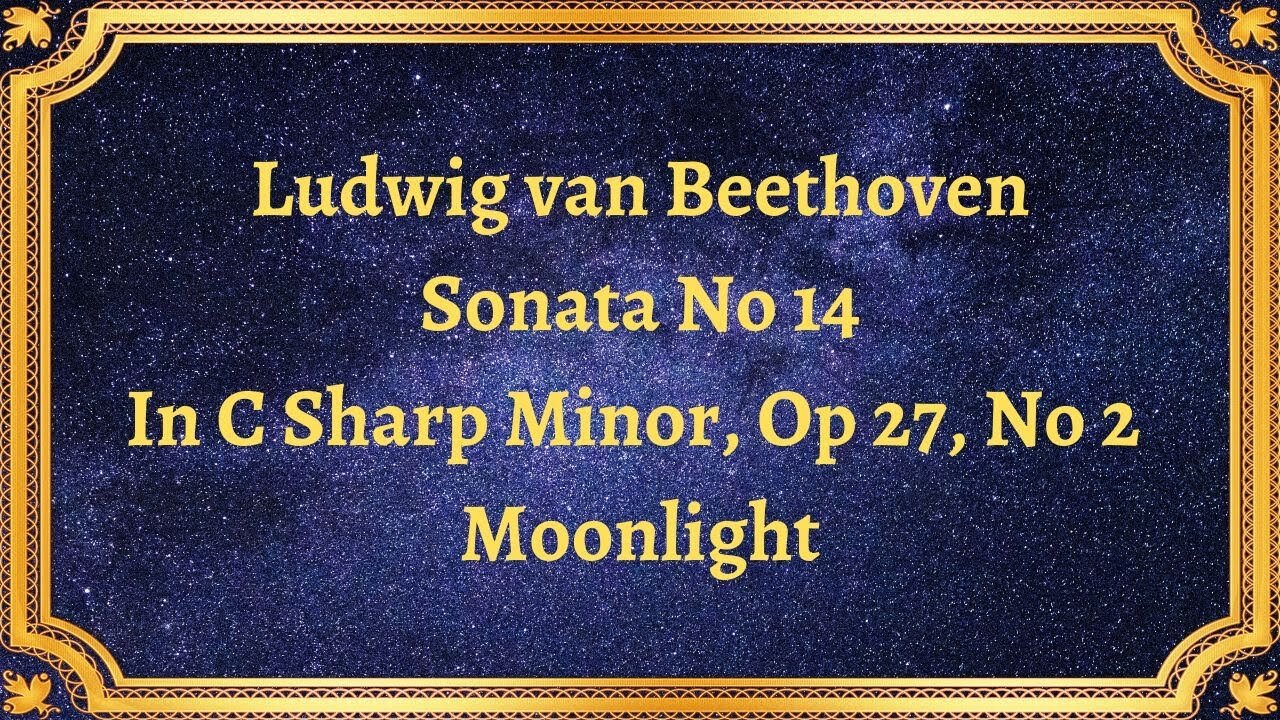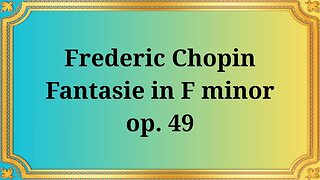Premium Only Content

Ludwig van Beethoven Sonata No 14, In C Sharp Minor, Op 27, No 2 Moonlight
#LudwigvanBeethoven #SonataNo14 #CSharpMinor #Op27No2 #MoonlightSonata #sonataform #Adagiosostenuto #Allegretto #Prestoagitato #progressivetonality #classicalmusic #middleperiod #musicaltechniques #piano #classicalorchestra #classicalcomposition #musictheory #musicalstructure.
Publication date 1950
Vladimir Horowitz Pianist
Ludwig van Beethoven's Sonata No. 14, in C Sharp Minor, Op. 27, No. 2, more commonly known as the Moonlight Sonata, has become one of the most popular and well-known works of classical music. The sonata is famous for its haunting, introspective quality, capturing the listener's attention and evoking a range of emotions.
Composed in 1801, the Moonlight Sonata is a product of Beethoven's middle period, which was marked by his increasing experimentation with form and harmony. The sonata contains three movements - Adagio sostenuto, Allegretto, and Presto agitato.
The Adagio sostenuto is the most popular and familiar movement of the sonata, with its melancholic and dream-like melody. It's characterized by its use of a slow and repetitive arpeggio in the left hand, which provides the foundation for the melody in the right hand. This creates an effect like moonlight reflecting on the surface of water, which is likely how it earned its nickname.
The Allegretto second movement is more upbeat and playful, creating a marked contrast to the previous movement. It is considered to be a "transitional" movement in the sonata, leading the listener towards the final movement's fast-paced intensity.
The Presto agitato, the final movement of the sonata, is an eruption of energy and passion, with its rapid arpeggios and aggressive staccato notes. Known as one of the most technically challenging pieces by Beethoven, it reflects the turbulence and emotion found throughout the Moonlight Sonata.
The Moonlight Sonata was groundbreaking in its time for its use of the sonata form as a musical structure, deviating from the standard model of the time by placing the slow, melancholic movement first in the score. This challenged the traditional idea of "progressive tonality," where music would start in a minor key and end in a major key. Beethoven's Moonlight Sonata deliberately breaks this pattern, providing a unique and innovative approach to the traditional sonata form.
In conclusion, Ludwig van Beethoven's Sonata No. 14, in C Sharp Minor, Op. 27, No. 2, Moonlight, is a masterful work of classical music that has stood the test of time. With its haunting melody, melancholic atmosphere, and technical intricacy, it continues to captivate and inspire listeners today.
You have the opportunity to support the channel https://destream.net/live/RadSiarAl/donate
-
 11:13
11:13
Classical music_Music Inspiration
1 month agoFrederic Chopin Fantasy in F minor, Op. 49
752 -
 LIVE
LIVE
SpartakusLIVE
14 hours agoTOXIC Solos on ARC Raiders || Friday Night HYPE - WZ or Redsec Later?
1,421 watching -
 2:15:42
2:15:42
TheSaltyCracker
6 hours agoWoke is DEAD ReeEEStream 11-07-25
109K194 -
 1:29:13
1:29:13
Sarah Westall
6 hours agoThe City of London: Infiltration, Intimidation & Centralized Power w/ Mike Harris
38K12 -
 10:14:18
10:14:18
Dr Disrespect
16 hours ago🔴LIVE - DR DISRESPECT - ARC RAIDERS - AGAINST ALL DANGER
192K25 -
 32:09
32:09
ThisIsDeLaCruz
1 day ago $3.28 earnedFalling In Reverse: Christian Thompson’s Stage Tech Revealed
33.4K5 -
 4:41:02
4:41:02
SynthTrax & DJ Cheezus Livestreams
1 day agoFriday Night Synthwave 80s 90s Electronica and more DJ MIX Livestream 80s Night / Late Night Nostalgia
43.4K5 -
 4:05:52
4:05:52
Nerdrotic
11 hours ago $16.76 earnedHollywood REGRET | Disney's Predator | The Feminist Avengers - Friday Night Tights 379
69.1K17 -
 2:36:22
2:36:22
Mally_Mouse
4 days agoFriend Friday!! 🎉 - Let's Play! - MIMESIS
34.7K3 -
 41:20
41:20
MattMorseTV
7 hours ago $28.19 earned🔴Schumer just BACKSTABBED his OWN VOTERS. 🔴
41K88